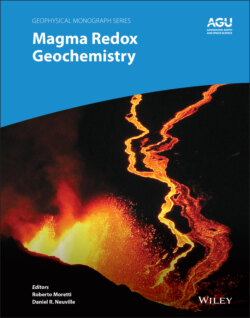Читать книгу Magma Redox Geochemistry - Группа авторов - Страница 53
3.5. CONCLUSIONS AND FUTURE DIRECTIONS
ОглавлениеOxygen fugacity varies as a function of tectonic setting. We have shown that all estimators of magmatic fO2 (XANES, magnetite‐ilmentite pairs) and mantle source fO2 (spinel oxybarometry, V/Yb ratio) show independently that the fO2 of ridges < back‐arcs < arcs. Inferences about plume fO2 are strongly model dependent, and our study indicates that plume fO2s range widely, but on average are similar to or higher than mid‐ocean ridges. We also strongly conclude that mantle lithologies record a much greater range in fO2 than volcanics.
The process of subduction generates elevated fO2 in both melts and mantle lithologies, though the mechanism and locus of this shift remains debated. The extent to which arc rocks are oxidized relative to MORB does not correlate with crustal thickness or indices of crystal fractionation. Degassing may oxidize or reduce magmas to small extents (< 0.2 log units) so long as melts are captured at pressures > 500 bar, and the tendency for shallow degassing (< 200 bar) to reduce magmas appears universal across all tectonic settings. Plate recycling may also enable plumes to achieve their elevated fO2 relative to mid‐ocean ridges; however, when attempting to project back to near‐primary compositions, the fO2 of plume lithologies is uncertain. This is because plume volcanics have thus far only constrained fO2 minima, and because plume xenoliths derive from lithospheric mantle that was generated at distal mid‐ocean ridges that have subsequently metamorphosed and are variably overprinted by the passage of transiting plume‐derived melts.
Several additional challenges confront a more complete understanding of oxygen fugacity as a function of tectonic setting. Geographic coverage of fO2 estimates remains poor, with peridotites from ridges, volcanic rocks and xenoliths from plumes, and primitive volcanic rocks from arcs especially so. Further sampling of primitive melts and mantle lithologies from diverse tectonic environments is needed in order to illuminate the geodynamic and compositional origins of variable fO2 across tectonic settings. Analytical challenges must still be overcome. Some of the most promising samples for the elucidation of redox processes – melt inclusions – are difficult to prepare and susceptible to radiation beam damage (Cottrell et al., 2018). Experiments and models are needed to gain insights into processes that may shift the fO2s recorded by melts and residues during partial melting of the source and after melt and residue separate. Additional observations of natural samples and new experiments and models are required to ultimately connect the fO2 recorded by partial melts, peridotites and pyroxenites, and the fO2 of the solid convecting mantle.
